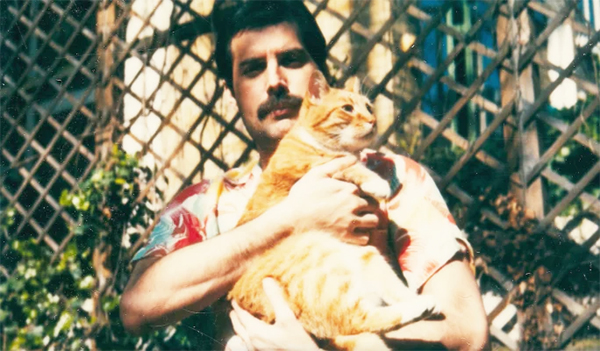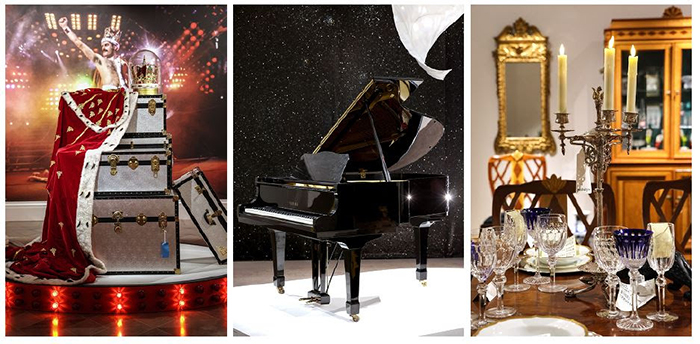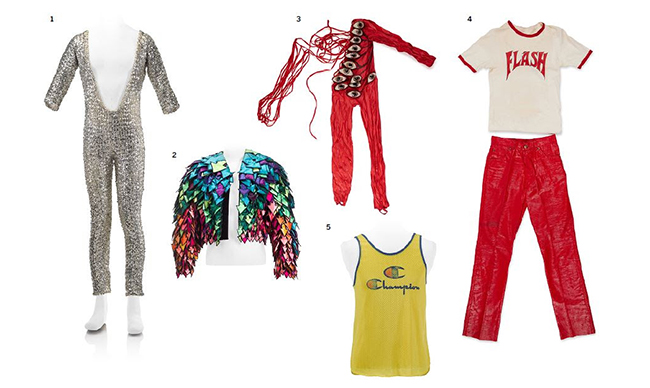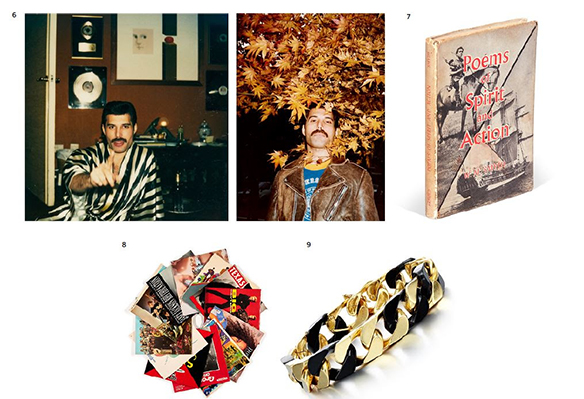소더비 고 프레디 머큐리 소장품- 왕관에서 피아노까지 전시/경매(8/4-9/5)

The Public Exhibition of Freddie Mercury’s Personal Collection Opens With the Unveiling of One Final Star Lot:
The Treasured Yamaha Baby Grand Piano On Which He Composed Over a Decade of Hits, From Bohemian Rhapsody to Barcelona Estimated at £2-3 million
Running for Four Weeks, the Free Exhibition Lifts the Curtain on Mercury’s Private World through more than 1,400 lots from his London Home
All now available to view for the first time here

ONDON, 3 AUGUST 2023 - Tomorrow Sotheby’s doors will open onto the full and fascinating world of Freddie Mercury. Much has been written, discussed, filmed and broadcast about the man who was, without doubt, one of the world’s greatest musicians and superstars; but here, through thousands of items that were an integral part of his life, a captivating new story reveals itself.
From today, every inch of Sotheby’s 16,000 square foot gallery space in London’s New Bond Street will be given over to the vast array of costumes, hand-written lyrics, drawings, furniture, and decorative and fine art that were so much a part of Mercury’s life and with which he lived in his beautiful London home, Garden Lodge.
Entry to the exhibition is free and open to all, seven days a week from 4th August, to 5th September, which would have been Mercury’s birthday.
Today, too, the full catalogues for six auctions will be available for the first time to view online.
https://www.sothebys.com/en/series/freddie-mercury-a-world-of-his-own

Each of the 15 galleries within Sotheby’s New Bond Street building will be devoted to a different aspect of Mercury’s life. While some of the items to be displayed are familiar from his greatest stage performances (the red cape and crown, for instance, that he wore on his very final stage appearance with Queen at Knebworth in 1986, or the early catsuits, onto which he sewed his very own ‘Mercury Wings’), many of the items in the collection have never been seen by anyone other than Mercury’s closest circle of friends.
From the early school time experiments with poetry, to his newly-discovered designs for Queen’s famous crest and working manuscripts for many of the band’s most famous songs, to the ground-breaking costumes which took the world by storm - these are all waiting to be discovered together with the beautiful paintings, furniture, Japanese decorative arts, glass, graphic arts, ceramics and objets d’art that Mercury sought out from auction houses and top manufacturers, and in which he found such joy.
At the heart of the exhibition will be an item - revealed today for the first time - that was deeply precious to Mercury and a vital element in the creation of his greatest compositions: his treasured Yamaha G2 Baby Grand Piano, estimated at £2-3 million.
By 1975, the trusty old upright piano on which Freddie had composed the hits on Queen’s first three albums was no longer equal to his ever more panoramic musical ambitions. With the financial backing of music mogul Don Arden – who was unsuccessfully attempting to woo Queen to his management table – Freddie set out to find the perfect piano, with a sound that resonated with his evolving musical ambitions. After an intensive search lasting many weeks, he finally found what he was looking for: a rare baby grand with an easy keyboard action, an elegant look, and a particularly clean and clear sound, made by the Japanese manufacturer Yamaha, who had only recently started importing their instruments to England.
The piano would just about fit into the small apartment he was sharing at the time with Mary Austin. As she recalls, ‘Freddie treated the Yamaha with absolute respect. He considered it to be more than an instrument, it was an extension of himself, his vehicle of creativity. He would never smoke at the piano or rest a glass on top of it and would ensure nobody else did either. The piano was always pristine.’
Freddie’s new piano very soon proved its worth. In the months after its arrival, he used it to develop and hone the epic track Bohemian Rhapsody, released towards the end of that year. Soon after this, the piano came with Mary and Freddie to their new apartment in Stafford Terrace, and when Mary moved on to Phillimore Gardens, Freddie decided the Yamaha should go there too; thereafter, he would come to Mary’s apartment to play and compose on his beloved instrument.
In 1986/7, the piano made its final move, to Garden Lodge, where Freddie and Mary spent a long day deciding exactly where to place it, repeatedly wheeling it around the sitting room from one prospective location to the next. Finally, it was pushed into a prominent spot in his drawing room, out of the direct sun but with light from the glorious bay window falling over Freddie’s shoulder, and when he sat down to see how it felt in that position, rather than shaking his head yet again, he looked up and said ‘Fuck it. Let’s put it here.’ And there it stayed.
From Bohemian Rhapsody to Freddie’s final operatic masterpiece, Barcelona, this cherished black Yamaha baby grand was at the heart of an extraordinary musical and personal journey, which has no real parallels in the history of pop and rock music.

1. Freddie Mercury’s Sparkling Stage-Worn Silver Sequined Catsuit, Worn On The ‘News Of The World’ And ‘Jazz’ Tours, 1977-1979. Amongst Mercury’s most iconic stage costumes, this sensational silver sequin catsuit appears to have been reserved for moments of maximum visual impact. Estimate £40,000–60,000
2. The Spectacular Rainbow-Coloured Satin Arrow Appliqué Jacket Made For And Worn On The ‘Hot Space’ Tour, 1982. Giving an overall effect of movement similar to the feathers of an exotic bird, lined in black satin and fastening at the front with Velcro, unlabelled. Estimate £10,000–15,000
3. Freddie Mercury’s fantastical outfit, affectionately known as ‘The Prawn’, worn in the video for ‘It’s A Hard Life’, 1984. This flamboyant red catsuit, replete with 13 hand-painted ‘eyeballs’ with red velvet ‘eyelids’, was also worn with a detachable decorative ‘spine’ to resemble flames. Mercury wore it again for the flashback sequences in ‘The Great Pretender’ promotional video in 1987. Estimate £15,000–20,000
4. A ‘FLASH’ T-shirt with matching red vinyl trousers, with letters hand stencilled recalling the motif on the cover of the Queen Soundtrack to the Flash Gordon film. This was a signature on and off stage look for Mercury throughout ‘The Game Tour’ of 1980-81. Estimate £15,000–20,000
5. Freddie Mercury’s stage-worn vest for his final performance with Queen, Knebworth Park, 9 August 1986, decorated with brand lettering and logo ‘Champion’. The vest is seen in footage of Mercury backstage before the start of the concert, and on stage for the first half of the concert. Estimate £6,000–8,000
6. An intimate collection of Freddie Mercury’s never-before-seen personal photographs and polaroids. Taken at home and abroad, this remarkable assortment of 265 images mostly date from the mid-1980s, documenting Mercury’s life at Garden Lodge as he celebrates birthdays and Christmases, snuggles with his cats, and relishes being surrounded by special objects at home. Estimate £5,000–7,000
7. An exceptionally rare surviving school book, showing the young Freddie Mercury’s engagement with poetry. Dating from 1964-1966, Mercury was studying at Isleworth Polytechnic at the time, enrolling shortly after he and his family arrived from Zanzibar. In this book, W.M. Smyth’s Poems of Spirit and Action, the 18-year-old Mercury provides commentary and judgments (“ideas quite good”) on poems, definitions of words, and adds whimsical thoughts (including a reference to John Wayne), as well as other notes, sketches and doodles. It also includes a poem he composed titled ‘Bird’ (“Feather flutter in the sky…”). His name, Fred Bulsara, is inscribed at the front. Estimate £800–1,200
8. Freddie Mercury’s personal record collection, circa 275 records. Mainly 12 inch, some 7 inch, including: Madonna, Spandau Ballet, Diana Ross, Simple Minds, Eurythmics, Prince, The Bangles, Led Zeppelin, Carly Simon, Billy Joel, Tina Turner, Kate Bush, Brian May, David Bowie, Neil Young, Aretha Franklin, Dionne Warwick, a-ha, Tears for Fears, Donna Summer, Pointer Sisters, George Michael, The Beatles (including factory samples), Pearl, Michael Jackson, the Metropolis soundtrack, Christmas compilation albums. Estimate £1,000–1,500
9. An Onyx Bracelet, attributed to Cartier London, 1980s by repute a gift from Elton John. In Mercury’s words “sometimes I could go to Cartier’s, the jewellers, and buy up the whole shop”. Accordingly, numerous pieces by the brand can be found in his collection. Estimate £8,000–12,000
10. A multicoloured, illuminated 1941 Wurlitzer jukebox, which was acquired by Mercury for his kitchen at Garden Lodge, a room where he spent so much of his time. The design recalls both 1920s Art Deco and Art Nouveau, with the peacock feather design shimmering when lit up. All these years later, the jukebox still operates on its original coinage – 25c, 10c and 5c – and will spin some of Mercury’s favourite records, including: “Hallelujah I Love Her So” by Ray Charles, “Rip It Up” by Little Richard and “Shake, Rattle and Roll” by Bill Haley. Estimate £15,000–25,000
11. Freddie Mercury’s neon telephone, which he bought in Munich and was subsequently kept in the kitchen at Garden Lodge. Estimate £2,000–3,000
12. Cats, Cats, Cats: a motley group of 29 feline ornaments in a whimsical variety of decorative styles. Garden Lodge was also home to a collection of different sorts, his six cherished cats who were free to roam the house and garden, and numerous cat related-items are included in the sales. Estimate £300–500
13. Freddie Mercury’s favourite games and puzzles, brought out to play at home and while he was on tour - especially Scrabble which he was exceptionally good at. The collection comprises a 500-piece illustrated jigsaw of Richard Dadd’s painting The Fairy Feller’s Master-Stroke (1855-64) in Tate Britain’s collection. Mercury even composed a song inspired by the darkly wondrous piece, and included a reproduction of the painting with the album, Queen II. Estimate £300–500
14. An Art Deco style dumbwaiter stand, possibly American, 1980s. This was kept next to Mercury’s bar. painted to resemble a moustached waiter, but also bearing an uncanny resemblance to Mercury himself. Estimate £800–1,200




 암스테르담 베르메르 특별전 영화관 상영 @심포니스페이스(9/7)
암스테르담 베르메르 특별전 영화관 상영 @심포니스페이스(9/7)

